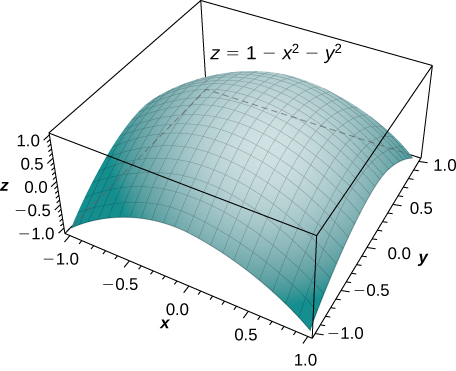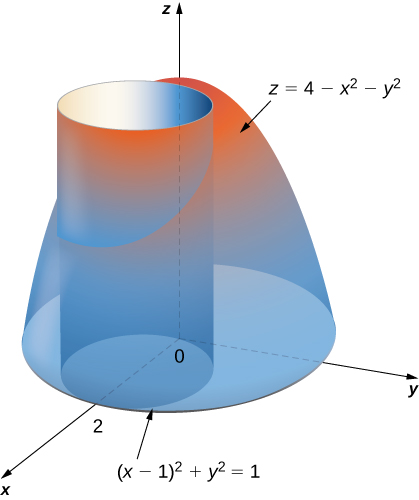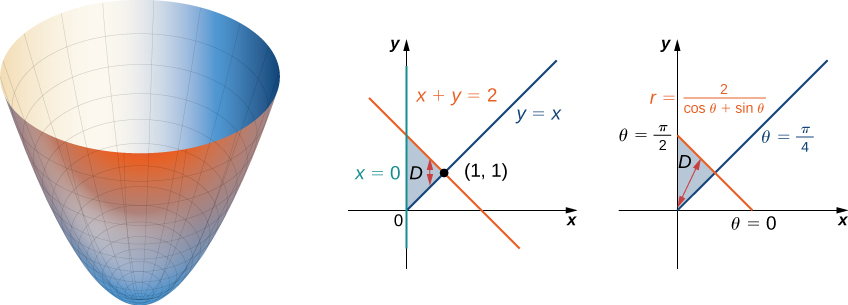| << Chapter < Page | Chapter >> Page > |
Evaluate the integral where is the region bounded by the polar axis and the upper half of the cardioid
We can describe the region as as shown in the following figure.

Hence, we have
As in rectangular coordinates, if a solid is bounded by the surface as well as by the surfaces and we can find the volume of by double integration, as
If the base of the solid can be described as then the double integral for the volume becomes
We illustrate this idea with some examples.
Find the volume of the solid that lies under the paraboloid and above the unit circle on the -plane (see the following figure).

By the method of double integration, we can see that the volume is the iterated integral of the form where
This integration was shown before in [link] , so the volume is cubic units.
Find the volume of the solid that lies under the paraboloid and above the disk on the -plane. See the paraboloid in [link] intersecting the cylinder above the -plane.

First change the disk to polar coordinates. Expanding the square term, we have Then simplify to get which in polar coordinates becomes and then either or Similarly, the equation of the paraboloid changes to Therefore we can describe the disk on the -plane as the region
Hence the volume of the solid bounded above by the paraboloid and below by is
Notice in the next example that integration is not always easy with polar coordinates. Complexity of integration depends on the function and also on the region over which we need to perform the integration. If the region has a more natural expression in polar coordinates or if has a simpler antiderivative in polar coordinates, then the change in polar coordinates is appropriate; otherwise, use rectangular coordinates.
Find the volume of the region that lies under the paraboloid and above the triangle enclosed by the lines and in the -plane ( [link] ).
First examine the region over which we need to set up the double integral and the accompanying paraboloid.

The region is Converting the lines and in the -plane to functions of and we have and respectively. Graphing the region on the -plane, we see that it looks like Now converting the equation of the surface gives Therefore, the volume of the solid is given by the double integral
As you can see, this integral is very complicated. So, we can instead evaluate this double integral in rectangular coordinates as
Evaluating gives

Notification Switch
Would you like to follow the 'Calculus volume 3' conversation and receive update notifications?